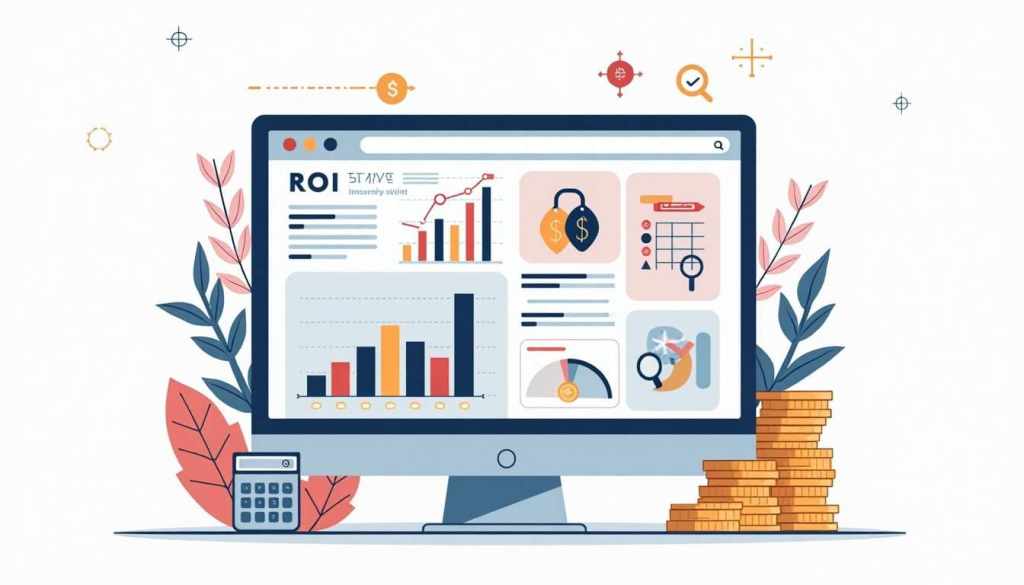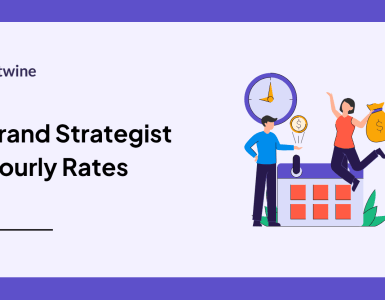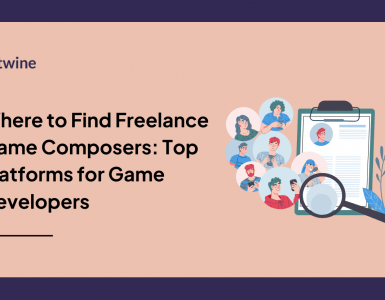There are roughly 26 million eCommerce sites worldwide, but the average conversion rate hovers around 2.5%. If your store is stuck near that number, every tenth of a percentage point you claw back can translate into thousands—sometimes millions—of dollars in annual revenue. That’s why hiring the right eCommerce developer isn’t simply a “nice to have.” It’s a direct lever on profit. In this guide, we’ll break down exactly how to vet, interview, and ultimately hire a developer who thinks in revenue, not just code.
Why Conversion Optimization Matters for Your Online Store
Before we dive into résumés and repositories, let’s align on why conversion optimization is the hill worth building your tech stack on.
The Revenue Multiplier Effect
A 1% increase in conversion rate on a $1 million store equals roughly $10 000 in extra monthly revenue—without touching ad spend. It’s the closest thing to printing money you’ll see outside a central bank.
User Experience & Brand Trust
Slow pages, clunky checkout flows, and mismatched CTAs aren’t just annoying, they erode trust. And when trust breaks, so does the path to repeat purchases. A seamless, intuitive user experience builds the confidence that keeps customers coming back.
SEO & Performance Synergy
Google now factors Core Web Vitals into rankings. Faster, leaner code boosts search position and—guess what—conversion rate. A good ecommerce developer sees this virtuous circle and codes accordingly.
Prerequisites Before You Start Vetting Developers
Evaluation works best when you know what success looks like. Here’s your pre-work checklist.
Audit Your Current Funnel
Identify drop-off points with Google Analytics 4, Hotjar, or your CRO tool of choice. Come to interviews with hard data—“Our cart abandonment is 68%”—not vague feelings.
Set Measurable KPIs
Decide whether you care about Average Order Value, checkout speed, or subscription opt-ins. Clear goals help candidates propose real solutions instead of generic platitudes.
Align Stakeholders Early
Marketing, product, and engineering should all agree on what “good” looks like. Otherwise your shiny new developer will spend half their time resolving turf wars.
Define Budget & Timeline
Even the best dev can’t hit a moving target. Give them constraints so they can innovate within them.
Key Skills Every eCommerce Developer Should Bring to the Table
A glossy portfolio means little if the underlying skills don’t map to revenue. Here’s what to look for.

Technical Fluency in Your Platform
- Shopify: Liquid, Polaris, Hydrogen
- WooCommerce: PHP, REST API, Gutenberg blocks
- Magento 2/Adobe Commerce: Knockout.js, PWA Studio, GraphQL
If they can’t name at least two of your stack’s quirks, move on.
CRO Mindset & Experimentation
Ask about their preferred A/B testing frameworks—Optimizely, Google Optimize 360, VWO. Do they factor statistical significance, or do they stop tests at “looks good”?
Analytics Literacy
Look for hands-on experience with GA4 events, GTM containers, and dataLayer pushes. A developer who can’t trace a funnel in real time is flying blind.
Performance Optimization
They should know the waterfall view in Chrome DevTools like most people know Instagram. Lazy loading, code splitting, and server-side rendering shouldn’t be exotic terms.
UX & Accessibility
Conversion optimization isn’t just prettier buttons. WCAG 2.2 compliance, keyboard navigation, and color contrast directly influence every user’s ability to buy.
Security & Compliance
PCI DSS, GDPR, CCPA. If those acronyms make a candidate sweat, that’s a red flag the size of a checkout error page.
Portfolio Deep Dive: Reading Between the Pixels
Portfolios can be smoke and mirrors. Let’s pierce the haze.
Look for Measurable Wins
Ask: “What was the baseline conversion rate, and where did it land?” A decent dev tracks uplift. A great dev ties code changes to revenue.
Industry Relevance vs. Adaptability
Experience in fashion helps if you’re a fashion brand, but adaptability often trumps same-sector sameness. Have they excelled across niches? Good sign.
Mobile-First Proof
More than 70% of eCommerce traffic is mobile. Ensure their past builds load in under 3 seconds on 4G connections. Pull out your phone in the interview; watch them sweat—or smile.
Code Quality Glimpses
Request a GitHub link. Even a private snippet reviewed via screen share helps you spot messy naming conventions, lack of comments, and over-nested logic.
Interview Questions That Separate Tinkerers from CRO Pros
- Walk me through your most successful A/B test. What was the hypothesis, and how did you ensure statistical validity?
- How do Core Web Vitals influence conversion, and what’s your process for improving each metric?
- Explain a time when development and marketing goals clashed. How did you resolve it?
- What’s your approach to schema markup for eCommerce products?
- How do you secure sensitive customer data while maintaining fast load times?
Look for clear, confident answers—not buzzword salad.
Testing Their Process: Small Projects & Trial Sprints
The real litmus test is collaboration in the wild.
Set Up a Micro-Optimization Challenge
Example: “Reduce hero image LCP from 3 s to 1.8 s without lowering resolution.” Watch how they scope, prioritize, and implement.
Evaluate Communication Cadence
Do they share async updates? Crystal-clear Loom walkthroughs? Drip-feed blockers in Slack? Silence kills CRO momentum faster than scope creep.
Collaboration With Marketing
Developers who welcome copy tweaks, design feedback, and UTM tagging are worth their weight in un-abandoned carts.
Red Flags You Can’t Afford to Ignore
Sometimes the best hire is the one you don’t make.
Promises of Overnight Doubling
Real CRO is iterative. If someone quotes “300% uplift in two weeks,” ask to see the DeLorean they’re driving.
No Data, Only Opinions
Gut feelings are fine for latte orders, not checkout flows.
Cookie-Cutter Templates
If every project in their portfolio looks like the same Shopify theme, originality—and by extension, competitive advantage—will be limited.
Resistance to Analytics Tagging
Developers who avoid tag management often hide slow code or sloppy implementation.
Budget vs. Value: Calculating ROI
Sticker shock is real, but so is the cost of inaction.

Hourly Rates vs. Outcome-Based Pricing
An $85/hr developer who ships incremental improvements weekly may outperform a $150/hr superstar who disappears for a month.
Cost-of-Delay Math
Revenue lost per day × days delayed = the silent drain on your P&L. Present this to finance before they slash your dev budget.
Tools, Licenses, & Plugins
Ask for a line-item breakdown. Some devs sneak in premium plugins that renew annually.
Where to Find eCommerce Developers With CRO DNA
The good news: they’re out there. The better news: you don’t need a three-letter consulting firm to find them.

Freelance Marketplaces
Twine, Toptal, and Codeable have pre-vetted talent. Filter by “conversion optimization” plus your platform.
Specialized Agencies
Agencies cost more but can provide a full CRO squad—developer, designer, analytics pro—in one package.
Community Forums
Shopify Community, Magento Stack Exchange, and WooCommerce Facebook groups are bursting with contributors who solve real problems in public every day.
Making the Final Call
Decision paralysis is real when every candidate seems solid. Here’s how to cut through the noise.
Build a Weighted Decision Matrix
Score each candidate on technical fit, CRO proficiency, communication, and cost. Multiply by importance weightings. Highest score wins.
Get Stakeholder Buy-In
Share the matrix, field questions, and secure thumbs-up. Surprises later equal delays now.
Draft a Crystal-Clear SOW
Include milestones, deliverables, KPIs, and exit clauses. Ambiguity breeds scope creep.
After Hiring: Setting Up for Success
The handshake is just the prologue.
Kickoff Checklists
- Access to staging & production
- Analytics & tag manager permissions
- Design system or brand guidelines
- Sprint cadence & communication channels
Foster a Continuous Testing Culture
Implement a 90-day roadmap of experiments. Automate alerts when tests reach significance.
Review Loops & Retros
Bi-weekly retrospectives keep progress transparent and learning perpetual.
Wrapping Up
Evaluating an eCommerce developer for conversion optimization is equal parts art, science, and gut check. Focus on data-driven portfolios, ask pointed questions, and test collaboration early. Nail that, and you’ll turn checkout friction into compounding revenue—one deploy at a time.
Next step? Explore how Twine’s marketplace connects you with proven eCommerce developers in days, not weeks. See how it works →
Start Optimizing with Expert Developers
Ready to elevate your eCommerce conversions? At Twine, we streamline the process of finding the perfect developer with a keen eye for conversion optimization. With us you can hire top-tier freelance talent, specialized in transforming your eCommerce challenges into revenue-generating solutions. Don’t let your conversion rates stagnate. Post your project for free and partner with a developer who can help you outpace the competition and maximize your online potential.



